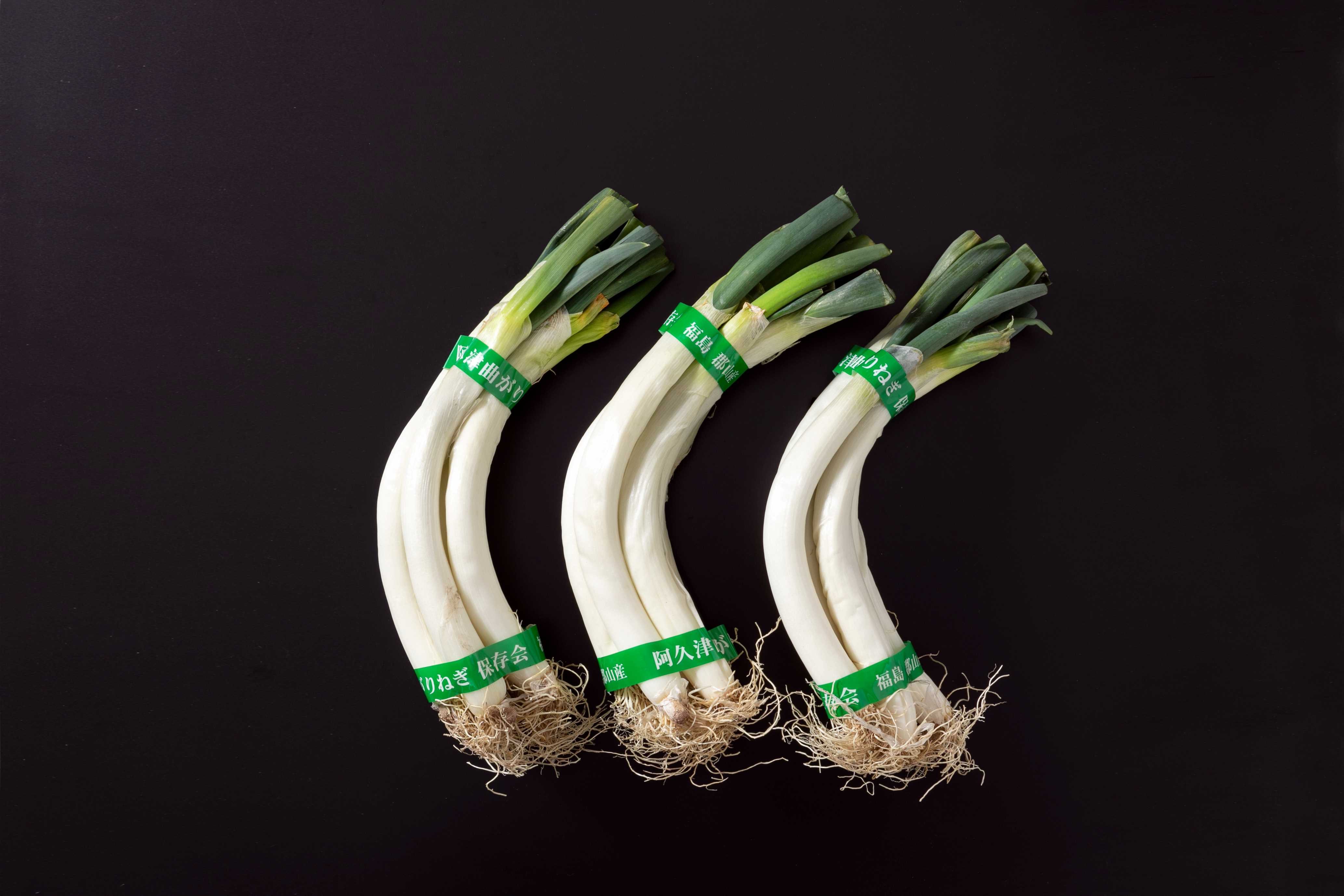Akutsu Magarinegi
| Registration Number | 113 |
|---|---|
| Name of the GI | Akutsu Magarinegi |
| Class | Vegetables/ Cereal grains/Pulses |
| Date of Protection | 2022/02/03 |
| Producing Area |
Fukushima Prefecture
Koriyama City |
| Applicant - Name and Address | Akutsu Magarinegi Hozonkai (Akutsu Magarinegi Preservation Society) 50 Tategawa, Akutsumachi, Koriyama City, Fukushima Prefecture |
Producing Area
"Akutsu Magarinegi" is a long green onion (1) with crescent-shaped stalk that is sweet and soft and has strong umami. Compared to other green onions on the market, it contains 1.8-fold more amino acids that enhance umami (glutamic and aspartic acids) and 1.7-fold more sugar.
It is sold at a price 30% higher compared to other green onions produced in Koriyama.
The seeds for producing "Akutsu Magarinegi" are "Akutsu Negi", a traditional variety, and collected by producing members themselves. When seeds are difficult to acquire such as during disasters, seeds stored in the Horticultural Promotion Center of Koriyama City are supplied.
"Akutsu Magarinegi" is grown in the fields within the production area. The onions planted in April and May are once pulled up in August and September and replanted by laying them at an angle of about 45 degrees and covering them with soil, which is a process called "yatoi". The time of performing the task may shift depending on the growth.
The shipping standards require that the white stalk part be a crescent shape, and those that have turned brown or have leaf burn are to be removed.
The soil in Akutsu district, the home of this onion, is mostly clayey and is thus unsuitable for growth of onions. People in the district have long performed "yatoi" (pulling out the onions once in summer and replanting on inclined bed) to increase the white (edible) part of stalk.
This cultivation method has led to the birth of "Magarinegi", which is sweet and soft and has strong umami. The onion was cultivated only in Akutsu District in the early Showa period and has spread to all Koriyama City. Akutsu Magarinegi Preservation Society was established in 2005, and production of the original variety has continued until today.
As of 2018, there are 14 production members, the cultivation area is approximately 3ha, and annual shipment is approximately 45t.
- Long green onion (negi or naganegi) is native from western China to central Asia. It is believed to have been introduced to Japan during the Nara Period (2) and has been consumed as a traditional vegetable. Various negi brands are produced throughout Japan and named after each region.
- Nara period (710 to 794AD) is a time division in Japanese history. The 84-year-long period extends from the time when Emperor Gemmei moved the capital to Heijokyo (present Nara City) until the move of the capital to Heiankyo (present Kyoto City) in 794. It was when the emperor-centered political system based on the Ritsuryo codes was established and Tempyo culture flourished aiming toward spiritual protection of the state by Japanese Buddhism.


